| Join | Official Historian | City of Stamford | Blog | About Us | |
| Jewish Historical Society | Civil War Roundtable | Contact Us | |
|
|
|
|
Past and Present ExhibitionsGallery Hours: Thursday–Saturday, 11:00–4:00Current ExhibitTraveling Exhibits
Recent ExhibitsKids' Stuff: Tracing the Lives of Children Through Their Possessions c. 1700-1950
|
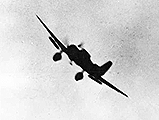 |
 |
 |
 |
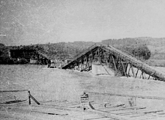 |
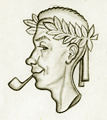 |
“Pride and Patriotism: Stamford’s Role in World War II,” takes visitors to the frontlines and along the home front in Stamford. The most recent Society exhibit, Portrait of a Family: Stamford through the Legacy of the Davenports, sought to illustrate the history of Stamford through the efforts of one family; in a similar way, this exhibit tells the story of Stamford’s experience during World War II through the lives of individuals who participated abroad as well as in the war effort at home. The individual experiences give exhibit viewers a more personal, intimate experience and appreciation of how the war affected people’s lives directly.
The exhibit includes exclusive, first-person accounts from veterans who are Stamford residents. There are representatives from all branches of the services as well as women’s divisions: the WACS and the WAVES. Stamford veterans were found in all the theaters of the war. In addition, “Pride and Patriotism” uses loaned weapons, uniforms, photographs, and artifacts to tell veterans’ stories. Loaned or society-owned items and objects trace the central role that local companies played in war efforts and reflect daily home-front life. A poster gallery, drawn from the Society’s World War II-era collection, offers visitors a snapshot of the U.S. Government’s efforts to attract and encourage public support for the money, material resources, labor, and day-to-day sacrifices needed for a successful war effort.
Syndicated cartoonist Mort Walker, creator of “Beetle Bailey”and other popular comic strips, was honorary chair of the exhibit. We are gratetful for his permission to reproduce images from his 1945/46 scrapbook for both the exhibit and this online version, in addition to the loan of other artefacts.
The online version of the exhibit strives to present not only the veterans’ stories beyond the excerpts shown in the galleries, but also to display images of objects they lent us for the exhibit – or in some cases donated to the Society – as well as their photos. The battle pages include links to related Internet sites for the more curious. We have added several interviews and biographies, relevant to displays and other references in the exhibit, from the book “An American Town Goes To War” by Tony Pavia, 1995, with the author’s kind permission.
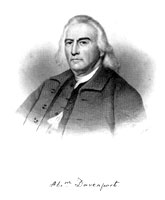 Portrait of a Family: Stamford through the Legacy of the Davenports
Portrait of a Family: Stamford through the Legacy of the Davenports
The exhibit chronicles the history of Stamford through the lens of one of its most important and influential families, the Davenports.
A number of exceptional objects are on display, including Davenport family silver, two William & Mary armchairs belonging to Rev. John of Stamford and Rev. Noah Welles, Davenport Empire chairs and an Empire sideboard, textiles, and portraits of members of the Davenport family. While the majority of the material in the exhibit comes from the Society's collections, other objects and manuscripts are on loan from various institutions as well as from the Davenport family.
The Society has received a 2006 Award of Merit from the Connecticut League of History Organizations for the Davenport Exhibit. Kudos to all involved in making the exhibit happen!
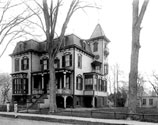
 Best Seats in the House
Best Seats in the House
Chairs from the Charlotte D.S. Cruikshank Collection
Gracious Living in Stamford
Late 19th & Early 20th Centuries
Exteriors and Interiors from Our Photo Collection

 Stamford's Civil War: At Home and in the Field
Stamford's Civil War: At Home and in the Field
sponsored by The Connecticut Humanities Council
Our Victorian Tea and presentation how a lady dressed in the Civil War Era was a resounding success!
Find out for yourself: Layer by Layer with plenty of photos!
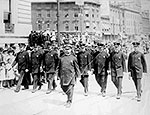 Law & Order:
The History of the Stamford Police Department
1830-1956
Law & Order:
The History of the Stamford Police Department
1830-1956
Donations of artifacts for our collection
and your stories are still greatfully accepted!
Other Exhibits
Immigrants' Stamford
Stamford Quilts
Of Significant Influence: Women of Stamford
Stamford Public Schools, Youthful Visions
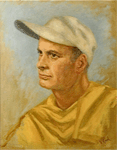
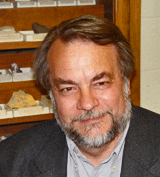 There was a presentation of the Native American materials recovered in
Stamford along the shore and from area rockshelters. The Society is indebted to Ernest Wiegand of Norwalk
Community College for serving as Guest Curator and for making available to show much of this
material. He was the principle investigator at many of the sites mentioned.
There was a presentation of the Native American materials recovered in
Stamford along the shore and from area rockshelters. The Society is indebted to Ernest Wiegand of Norwalk
Community College for serving as Guest Curator and for making available to show much of this
material. He was the principle investigator at many of the sites mentioned.